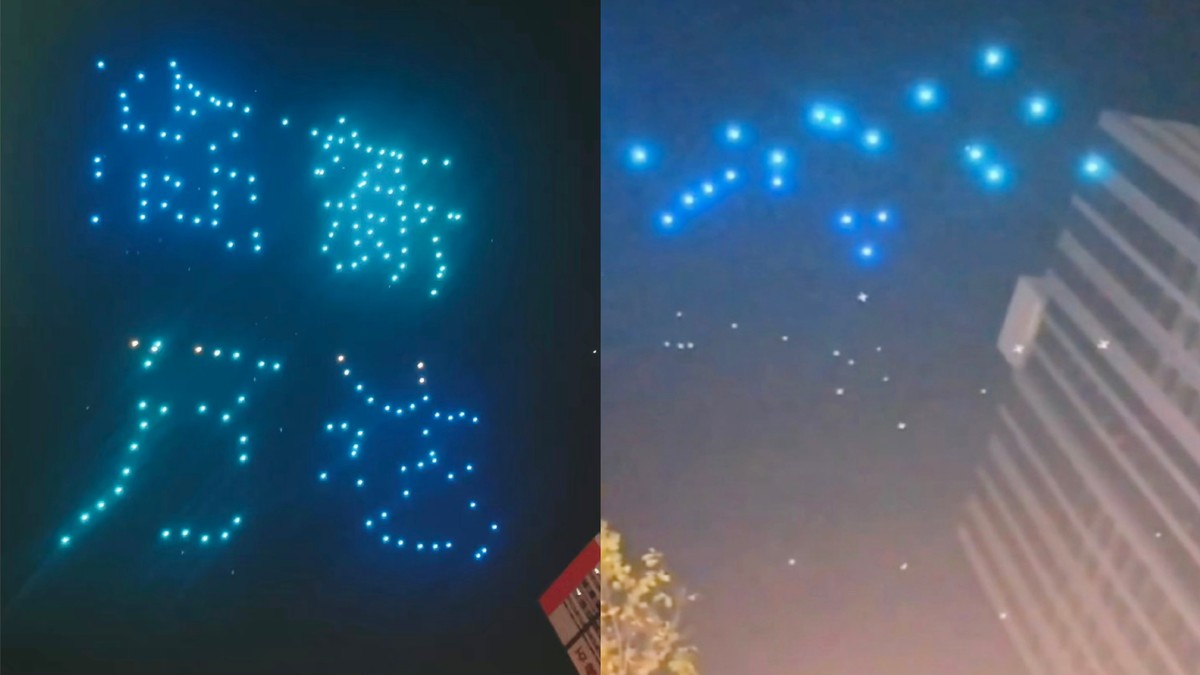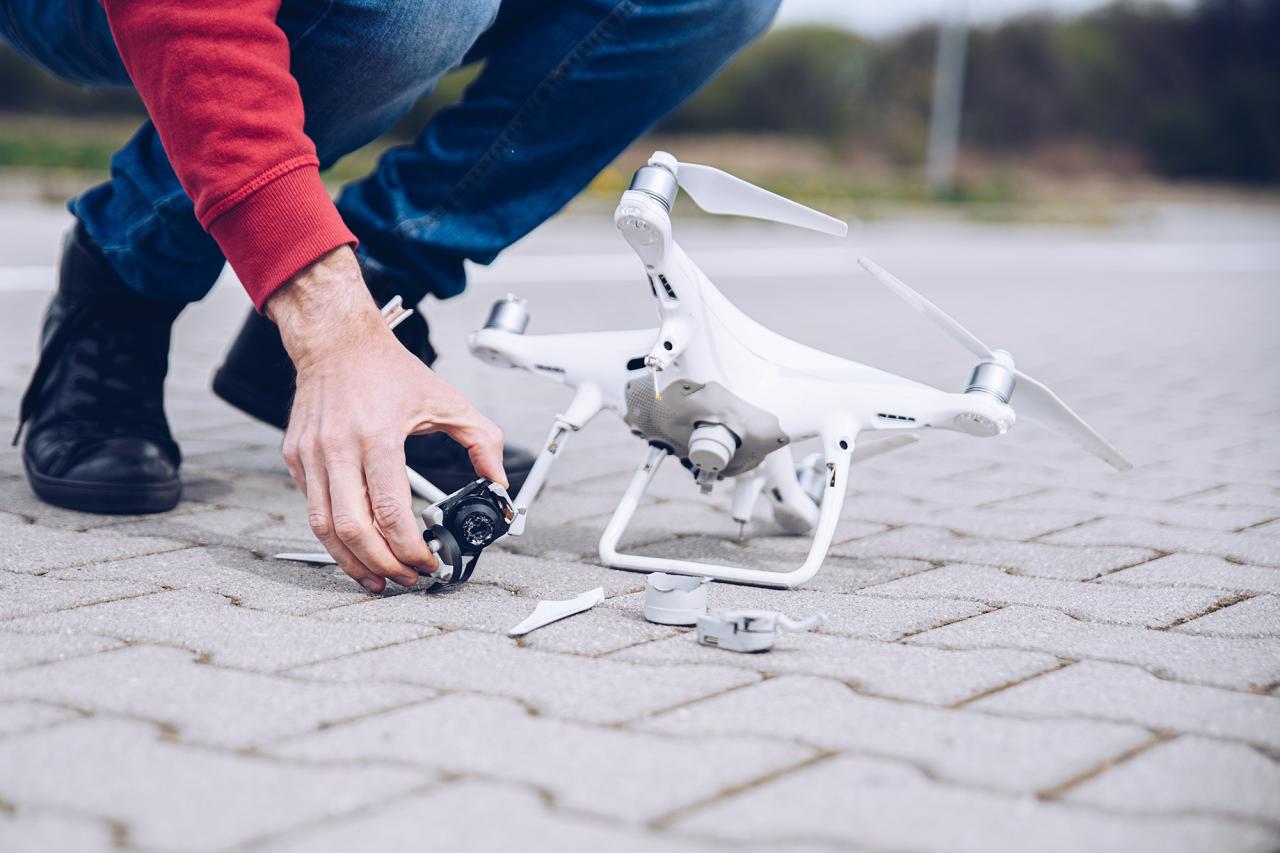Drone show crash – a phrase that conjures images of spectacular failures and potential hazards. But understanding the reasons behind these crashes is crucial for improving safety and ensuring the continued enjoyment of these dazzling displays. This guide dives into the various types of drone show crashes, from software glitches to human error, exploring preventative measures and technological advancements that aim to make drone shows safer and more reliable.
We’ll also look at regulations, training, and post-crash investigations, offering a comprehensive look at this critical area of drone technology.
We’ll cover everything from the mechanics of different types of failures to the importance of thorough pre-flight checks and robust operator training. By exploring real-world examples and discussing future trends, we hope to provide a complete understanding of the challenges and solutions involved in maintaining the safety and spectacular nature of drone shows.
Drone Show Crash Analysis: Understanding Causes, Prevention, and Mitigation
Drone shows, while visually stunning, carry inherent risks. Understanding the various types of crashes, implementing robust safety protocols, and leveraging technological advancements are crucial for ensuring the safe and successful execution of these spectacular events. This article delves into the key aspects of drone show crashes, providing a comprehensive overview of causes, prevention strategies, and future trends.
Types of Drone Show Crashes

Drone show crashes can be broadly classified based on their root cause. These categories are not mutually exclusive, and multiple factors often contribute to a single incident. Understanding these categories allows for targeted preventative measures.
- Software Malfunction: This includes bugs in the flight control software, communication errors between drones and the control system, or issues with the show’s sequencing software. Failure modes can range from erratic flight patterns to complete system lockups. For example, a software glitch could cause multiple drones to collide mid-flight.
- Hardware Failure: This encompasses mechanical failures (motor malfunctions, propeller damage), electronic component failures (GPS receiver, battery), or sensor issues (IMU, barometer). A common failure mode is sudden loss of control, leading to a crash. Imagine a motor failing mid-flight, causing a drone to plummet.
- Human Error: This category includes mistakes made by operators, such as incorrect programming, inadequate pre-flight checks, or poor decision-making during the show. Human error can manifest in various ways, from miscalculating flight paths to neglecting critical safety procedures. For instance, a pilot’s incorrect input could lead to a collision with another drone.
- Environmental Factors: These are external conditions affecting the drones’ performance, including strong winds, rain, fog, or electromagnetic interference. These can lead to loss of GPS signal, reduced visibility, or unexpected drone behavior. A sudden gust of wind could knock a drone off course, resulting in a crash.
| Crash Type | Frequency | Severity | Example |
|---|---|---|---|
| Software Malfunction | Moderate | Moderate to High | System-wide software bug causing multiple drones to lose altitude simultaneously. |
| Hardware Failure | High | High | Motor failure leading to a single drone falling from a significant height. |
| Human Error | High | Variable | Pilot error resulting in a collision between two drones. |
| Environmental Factors | Moderate | Moderate | Strong winds causing several drones to deviate from their programmed paths. |
Safety Protocols and Regulations
Establishing and adhering to stringent safety protocols is paramount for preventing drone show crashes. This involves a combination of pre-flight checks, rigorous maintenance, and compliance with relevant regulations.
- Pre-flight Checks and Maintenance: A comprehensive checklist should be followed before each show, covering battery levels, motor functionality, GPS signal strength, and software updates. Regular maintenance is vital to prevent hardware failures.
- Drone Show Operator Checklist:
- Battery level check
- Software update verification
- GPS signal strength assessment
- Motor and propeller inspection
- Emergency procedure review
- Weather conditions assessment
- Flight path simulation and review
- Communication system test
- International Safety Regulations: Regulations vary across countries, with some having stricter rules regarding airspace usage, operator licensing, and drone specifications. A thorough understanding of local regulations is essential.
Technological Aspects and Mitigation Strategies
Technological advancements play a crucial role in enhancing drone show safety. Redundancy, improved communication, and autonomous flight control systems are key elements.
Drone show crashes are unfortunately becoming more common, highlighting the need for robust safety protocols. Check out this article for a deeper dive into the causes and consequences: drone show crash. Understanding these incidents is crucial for preventing future mishaps and ensuring the continued safe and spectacular use of drone shows. Ultimately, preventing drone show crashes requires careful planning and execution.
- GPS and Communication Systems: Robust GPS systems with failover mechanisms and redundant communication channels minimize the risk of losing control. Real-time tracking and monitoring of each drone’s position are essential.
- Redundancy and Fail-Safe Mechanisms: Implementing backup systems for critical components, such as motors and GPS receivers, is crucial. Fail-safe mechanisms should be designed to safely land drones in case of malfunction.
- Autonomous Flight Control Systems: Advanced autonomous flight control systems can help prevent collisions, manage unexpected events, and ensure safe landing procedures even in challenging conditions.
Human Factors and Operator Training

Human error is a significant contributor to drone show accidents. Comprehensive training and best practices are essential to minimize this risk.
- Operator Training Programs: Training programs should cover flight simulation, emergency procedures, risk assessment, and troubleshooting techniques. Regular refresher courses are also recommended.
- Emergency Procedures and Crash Response: Operators must be trained to handle emergencies effectively, including immediate response protocols and post-crash procedures.
- Best Practices for Operators: Operators should follow strict protocols, perform thorough pre-flight checks, and maintain open communication during the show.
Post-Crash Investigation and Analysis
A systematic approach to investigating drone show crashes is essential to identify root causes and prevent future incidents. This involves data collection, analysis, and reporting.
- Crash Investigation Procedures: A thorough investigation should involve collecting flight data logs, examining drone hardware, and interviewing witnesses. Environmental conditions at the time of the crash should also be considered.
- Data Collection Methods: Flight data recorders, onboard cameras, and witness statements are crucial sources of information. Analyzing this data can help pinpoint the cause of the crash.
- Flight Data Analysis: Analyzing flight data can reveal patterns and anomalies that may have contributed to the crash. This analysis should be performed by experienced professionals.
- Accident Reporting and Documentation: A standardized reporting system should be implemented to track incidents, analyze trends, and improve safety measures.
Illustrative Case Studies
A hypothetical case study: During a large-scale drone show, a sudden power surge caused a malfunction in the central control system. This led to a loss of communication with several drones, resulting in uncontrolled descent and collisions. The investigation revealed inadequacies in the system’s power protection and communication redundancy. The sequence of events: Power surge -> Control system failure -> Communication loss -> Uncontrolled descent and collisions.
Future Trends and Predictions, Drone show crash

The drone show industry is constantly evolving. Predicting the future frequency and severity of crashes requires considering technological advancements and proactive safety measures.
- Advancements in AI and Autonomous Systems: Increased reliance on AI and autonomous systems will likely improve safety by reducing human error and enabling more precise flight control.
- Improved Redundancy and Fail-Safe Mechanisms: Future drone designs will likely incorporate more sophisticated redundancy and fail-safe mechanisms to mitigate the risk of hardware failures.
- Proactive Safety Measures: Investing in advanced simulation and training tools, implementing stricter safety protocols, and promoting industry-wide best practices are crucial for minimizing future crashes.
Last Word: Drone Show Crash
Ultimately, preventing drone show crashes requires a multi-faceted approach. It’s a combination of rigorous safety protocols, advanced technology, comprehensive operator training, and a commitment to continuous improvement. By understanding the causes of crashes and implementing the preventative measures discussed here, we can work towards a future where drone shows remain breathtaking spectacles, free from the risk of catastrophic failures.
Drone show crashes are unfortunately a risk, highlighting the complex tech involved. To see a well-executed show, check out the amazing visuals of the niagara falls drone show , a great example of successful choreography and piloting. Learning from incidents like crashes helps improve safety protocols for future drone displays.
The pursuit of safer, more reliable drone shows benefits not only the operators and spectators but also the broader adoption and advancement of drone technology itself.
Questions and Answers
What is the average cost of a drone show crash?
The cost varies greatly depending on the scale of the show, the damage to drones and property, and potential legal liabilities. It can range from thousands to millions of dollars.
How often do drone show crashes occur?
Precise statistics are difficult to obtain, as many incidents may go unreported. However, the frequency is increasing with the rise in popularity of drone shows, highlighting the need for better safety protocols.
What is the role of insurance in drone show operations?
Comprehensive insurance is vital for covering potential damages and liabilities arising from drone show crashes. Policies should cover drone damage, property damage, and potential injuries.
Are there specific legal consequences for drone show crashes?
Drone show crashes are unfortunately becoming more common, highlighting the need for robust safety protocols. A recent example illustrating potential issues is the orlando drone show malfunction , where technical glitches caused significant disruption. Understanding these incidents helps us improve drone show technology and prevent future crashes, ensuring safer and more spectacular aerial displays.
Legal consequences vary by jurisdiction but can include fines, lawsuits, and even criminal charges depending on the severity of the crash and any negligence involved.
